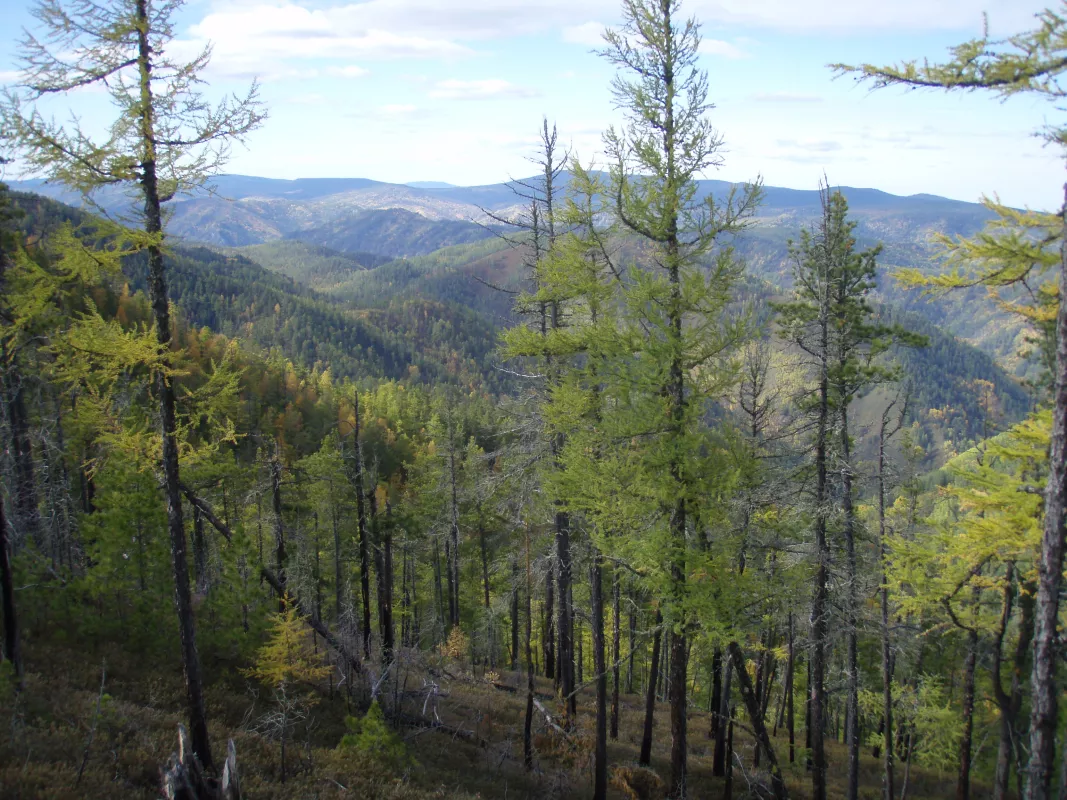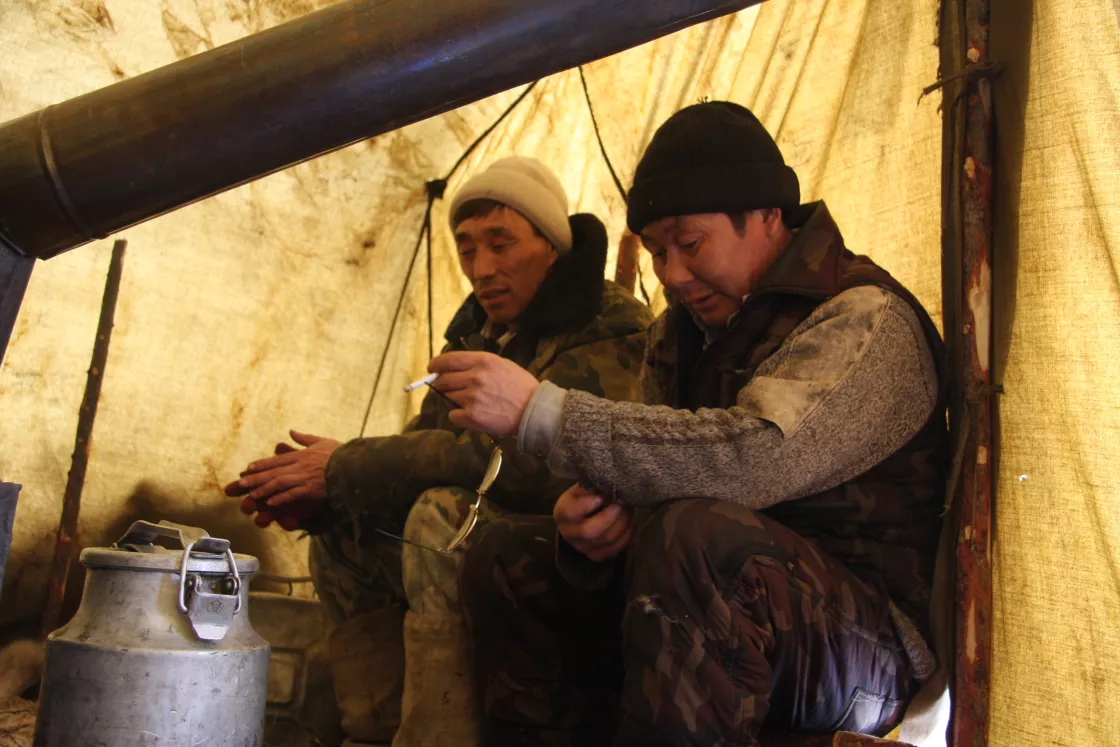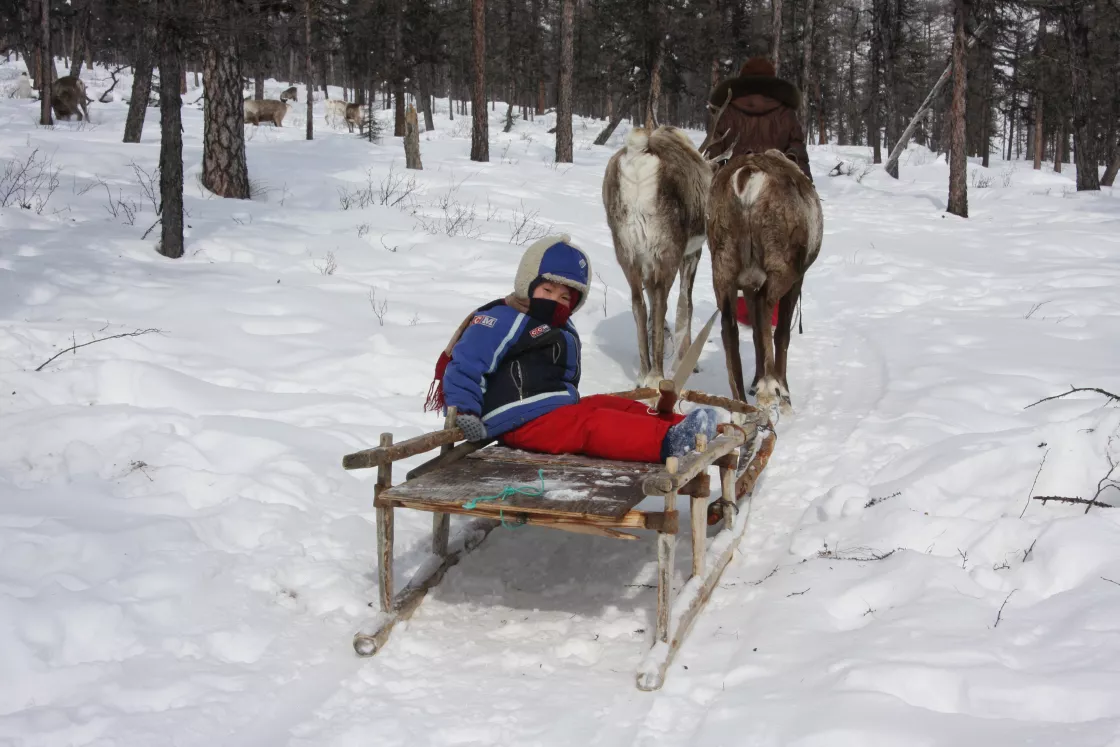By Agnieszka Gautier
In 2019, after fifteen years of groundwork, the Evenki Atlas came to life via the internet. The Evenki peoples of Sakha-Yakutia in Siberia, Russia, created this first online cultural atlas, which initially consisted of five modules dedicated to key components of Evenki life. In the summer of 2022, a sixth module with videos, the Evenki Visual Histories, was added.
The Evenki are nomadic hunters and reindeer herders that traverse the hilly taiga—a coniferous, sub-arctic forest of spruces, pines, and larches. Most Evenki are scattered widely throughout Siberia, but Iyengra, the small rural community northeast of Mongolia, is home to about 1,000 settlers. As a cultural heritage area, this community hosts the Evenki Atlas, which is just one of the ways the community is helping to preserve the Evenki language and way of life.
The new video module includes archival interviews with community members from Iyengra. “The Atlas is a living document, and these visual histories will add a whole new dimension of exciting and sometimes sad, but highly relevant statements on how life in the taiga of Siberia actually is today and what people say about it in their own terms,” said Tero Mustonen, a scientist and the president of
Snowchange Cooperative, a Finnish non-profit organization that works closely with local and Indigenous groups in the Arctic. As Siberia has been warming twice as quickly as the rest of the planet, the Evenki have seen firsthand the consequences of climate change on their way of life and surroundings. The interviews capture their observations and experiences.
Capturing history
Snowchange assisted with the documentation of Evenki knowledge and led the organization of content for the Atlas, which is based on an open-source software called the Nunaliit Atlas Framework. A National Snow and Ice Data Center (NSIDC) project, the Exchange for Local Observations and Knowledge of the Arctic (ELOKA), has been adapting Nunaliit since 2008 to support community-led research and knowledge documentation projects across the Arctic.
The newest module, the Evenki Visual Histories, includes about a dozen videos of Vladimir Kolesov, an Evenki reindeer herder, accomplished oral historian, and knowledge holder. Kolesov, who died in 2010, dreamed of seeing the Atlas come to life. Though he himself did not realize this wish, Kolesov’s voice offers viewers a rare and personal glimpse into the Evenki peoples, their connection to the land, and the effects of climate change on their communities.
Kolesov’s long, heart-shaped face often breaks into a smile as he speaks about life in and around Iyengra. His smooth hands contradict the wrinkles around his eyes, making it difficult to know his age. Kolesov speaks in Russian with intermittent Evenki words or phrases about life as a reindeer herder, modernity, changes in climate and the environment, and navigating the taiga.
An interviewer with Snowchange asks Kolesov questions, wanting to know what it is like traveling in the taiga. Kolesov uses landmarks like mountains, hills, and rivers to guide his way. Stars are not the main form of navigation, though Kolesov says he knows about the Milky Way and Ursa Major, but that the constellation moves, so he relies on visual memory. When a hill has less dense vegetation on one side, he knows it faces north. When a hill has more dense vegetation, it faces south. Fir forests, for example, mainly grow on the southern slope.
“But the taiga looks all the same,” the interviewer says. Kolesov laughs and responds that the taiga is absolutely different. “So you don’t get lost?” she asks. Kolesov shakes his head. He explains that if you hike to the top of some unknown mountain, and you don’t know where to go, to look at the branches of a tree. The wind blows constantly from north to south, and the branches of this twisted tree point the same way, away from the coming winds. The landmarks have Evenki names and Kolesov is not always sure what they mean. He says, “The names are old but they still exist, but what they mean…only the names exist now.”
Life is rich on the taiga, but changes to the climate, among other factors, make adapting a challenge. Kolesov speaks about reindeer herding, the process of preserving meat, preparing fish, and baking bread. He discusses changes to weather, fowl migrations, fish populations, and the health of reindeer in Iyengra. He says the animals are getting sicker. The snow sometimes is coated yellow, though he does not know why. *
Kolesov returns to the stars, naming some in Evenki. He confesses he does not look at the stars much. “The Elders probably looked at the stars more than we do,” he says, referring to his ancestors.
An international journey for a voice
The video interviews with Kolesov illuminate a life unknown to most, but the interviews took place more than two decades ago. Continued engagement with the Evenki is near impossible since the Russian-Ukrainian war changed how international science and Indigenous partnerships could function in Russia; safety has now become the ultimate priority. “We have to make sure no harm comes to the core researchers on the ground or to the Evenki people for working with western organizations,” Mustonen said. Since connections to the Evenki are closed at the moment, researchers worked on archival footage that was originally filmed in the 2000s and 2010s.
Embedding the video clips to the Atlas involved multiple collaborating partners. Snowchange handed the footage over for pre-clipping and content analysis to one of their collaborators, Hannibal Rhoades, a Communications and Advocacy Coordinator at The Gaia Foundation in the United Kingdom. Like Snowchange the Gaia Foundation works internationally to support Indigenous communities. The footage was then passed on to the California-based film director Thomas Miller from Pretty Good Productions to edit the clips for ELOKA.
ELOKA handled the technical side by embedding links, videos, and programming, and providing substantial funding through its National Science Foundation award to “make this dream come true,” as Mustonen put it.
To grow the visual histories module, Snowchange and its partners will work on other existing footage from the Lake Baikal region with the next series of videos offering a woman’s perspective. Including the Lake Baikal Evenki communities from Sakha-Yakutia was always part of the vision for the Atlas—to expand its voices. Snowchange will continue to work with ELOKA to add more place names, visual histories, and photos to the Atlas to nurture the breadth of Evenki Knowledge.
Mustonen also hopes in the next two or three years to change the Atlas’s interface to reflect a more Evenki aesthetic. All these efforts will help keep the Atlas alive, just as Kolesov had envisioned.
* In 2007, Reuters reported a similar sighting of yellow snow in the Omsk region of Siberia, about 4,000 kilometers (2,500 miles) west of Iyengra. Russian officials stated the snow was non-toxic, but no real cause was ever given, with some suggesting a chemical accident in Siberia, a deposit from nearby oil and gas refineries, or a potentially rare dust hurricane from neighboring Kazakhstan.





